By Rebecca Manley
In the fall of 1941, the Polish writer Aleksander Wat, recently released from confinement in a Soviet prison, made his way east across the vast expanses of the Soviet Union. In his memoirs, he depicts a railway station en route: “I saw a striking image of suffering there…. All of Russia was on the move … peasant men and women, whole families, middle-class people, workers, intellectuals, all on the miserable floor of the train station.”
Wat described the scene as an expression of “Russian nomadism.” Those en route, however, were not traditional Russian migrants. Nor, properly speaking, were they refugees. Unlike the archetypal European refugee, they were displaced but not stateless. In official Soviet parlance, moreover, they were “evacuees,” not refugees.
The term highlights the specificity of their experience. They were compelled to depart not only by a devastating war but by a government, their own government, which sought to protect the lives of its citizenry, to keep valuable “human resources” from falling into enemy hands, and to assure the security of the state by clearing frontline regions.
Between the German invasion in June 1941 and the autumn of the next year, approximately 16.5 million Soviet citizens were evacuated to the country’s interior. The scale of the operation was unprecedented. Evacuations were carried out in eight different Soviet republics and from territory that was home to approximately 40 percent of the Soviet population on the eve of the war.
As Wat’s description of the train station suggests, moreover, the evacuation touched Soviet citizens from all walks of life.
Evacuation was conceived by the Soviet state, in keeping with prewar developments, both as a form of economic mobilization and as an attempt to manage migration from the front lines. Although not punitive in nature, the operation was heavily indebted to the practices of population transfer developed over the previous decade.
Furthermore, the operation was structured around a hierarchy of people and places that reflected both an existing system of privilege and an ideologically informed vision of the Soviet polity. Finally, evacuation was conceived to protect not merely certain sec- tors of the population but the entire socialist state. At its core, the operation aimed to retain control over Soviet space, threatened, in the eyes of the state, not only by German forces, but by “enemy elements” and internal dissolution.
THE EVACUATION
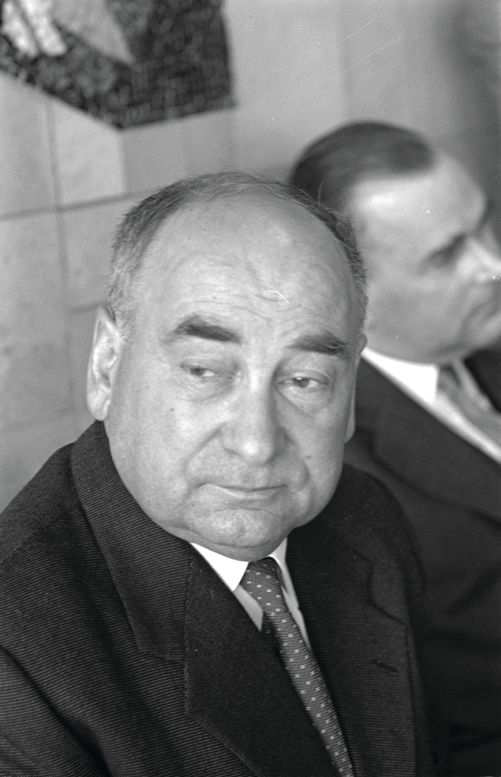
On June 24, 1941, two days after the German invasion had begun, an Evacuation Council was hastily created by joint decree of the Central Committee and the Council of People’s Commissars.
Evacuation was in many ways thrust on the Kremlin. German forces had already wreaked havoc along almost the entire length of the Soviet Union’s western border; taking advantage of the state of surprise, they had destroyed communication lines, dispersed defending forces, and broken through the system of frontier defenses.
By the time the decision to establish the Evacuation Council was made, officially sanctioned evacuations had already begun in both Latvia and Belorussia. Panteleimon Ponomarenko, then first secretary of the Communist Party of Belorussia, recalls having called Stalin on June 23 to request permission to commence evacuations in the Belorussian Republic. Stalin was allegedly surprised by the request and wondered whether it was really necessary.
Still captive to the principle of an offensive war and slow to grasp the scale of the disaster unfolding on the front lines, Stalin had, only the day before, ordered the General Staff to launch a counteroffensive and to invade enemy territory.
Ponomarenko’s report, however, left little doubt as to the gravity of the situation: such was the rapidity of the German advance that a large-scale evacuation from some of the western regions of the republic was, in his estimation, no longer possible, and any delay in the evacuation of Minsk and the eastern regions would be “irreparable.” The next day, following countless hours of impromptu meetings in Stalin’s office, the Evacuation Council was established.
JOURNEY FROM THE FRONT LINES
The mass evacuation was fraught with difficulties. Stalingrad was perhaps the most extreme example of a systematic German policy of bombing transport, but such incidents occurred in many other places as well. In Leningrad in mid-July, for instance, an official reported of an evacuation train carrying children that “enemy aircraft bombed the train, as a result of which many children were killed or wounded.”
In the westernmost parts of the country, which were evacuated only when the cities were already under heavy bombardment, losses were particularly heavy. Alexander Kovarskii, a child at the time, later recalled how the train on which he traveled east with his mother and aunt from Vitebsk to Tashkent was forced to stop several times en route as enemy planes bombed the railways.
Raisa Yasvoina, traveling east from Kiev with her mother and her younger brother, had a similar experience. “I remember,” she later recounted, “how the bombing started…. We got out of the train, and everybody was screaming and crying. It was terrible, a nightmare…and I somehow lost my mother.”
Fortunately for Raisa, they soon found each other, and continued on their journey together. Thirteen-year-old Tania Aizenberg, who was evacuated from Kiev in late August 1941, was not so lucky. Several months later, in Tashkent, she recounted her experiences to Lydia Chukovskaia, daughter of the famous Soviet author Kornei Chukovskii. The train on which she and her mother were traveling had stopped and she was playing outside while her mother prepared lunch in the railway car. All of a sudden, German planes appeared overhead.
“I ran into the fields,” Aizenberg recalled. “The fields were very wide. The wheat was already lying in sheaves. I hid in the sheaves. I looked up from under the wheat: the train was on fire, as was the railway car, where Mama was.” Aizenberg made the rest of the journey to Tashkent on her own.
The journey by boat could be equally treacherous. In Odessa, boat became the sole means of evacuation in August 1941. As Sophia Abidor later recalled, the “Germans had surrounded Odessa from all sides, and it was no longer possible to leave by train.”
Memories of the evacuation are invariably associated with bombardment. Sophia Abidor recalled how her boat was bombed en route from Odessa to Sevastopol. Fortunately, the fire was extinguished.
Less fortunate were those traveling on the ship Lenin on the fateful day when it hit a mine shortly after leaving Odessa. In his memoirs, Saul Borovoi recounts how an acquaintance had offered to secure him a spot on the Lenin, but he had declined; the “thought that I would have to ask something of someone was unbearable to me.”
Instead, Borovoi traveled on the less comfortable Voroshilov, from which he observed the tragedy firsthand. The Lenin sank, and only a fraction of the ship’s 4,000 passengers survived. Borovoi, who participated in the rescue effort, recalled one survivor in particular: a young man whom he pulled out of the water, “almost naked, but in his hands he had his Komsomol [a Soviet Communist youth organization] membership card. He was terrified of losing it.”
In other cases, people traveled by car or truck. In this respect, the military, managerial, and political elite were particularly well provisioned. Despite directives issued in Belorussia forbidding the requisitioning of state cars to this end, the practice was widespread, particularly among military officers who regularly requisitioned cars to evacuate their families.
A command issued to the troops of the Western Front in early July noted that “at the same time as active units at the front have a desperate need for motor transport, a significant number of cars settle in the rear and are used in a most disorderly manner.” Party members and factory directors likewise requisitioned cars to evacuate either themselves or their families.
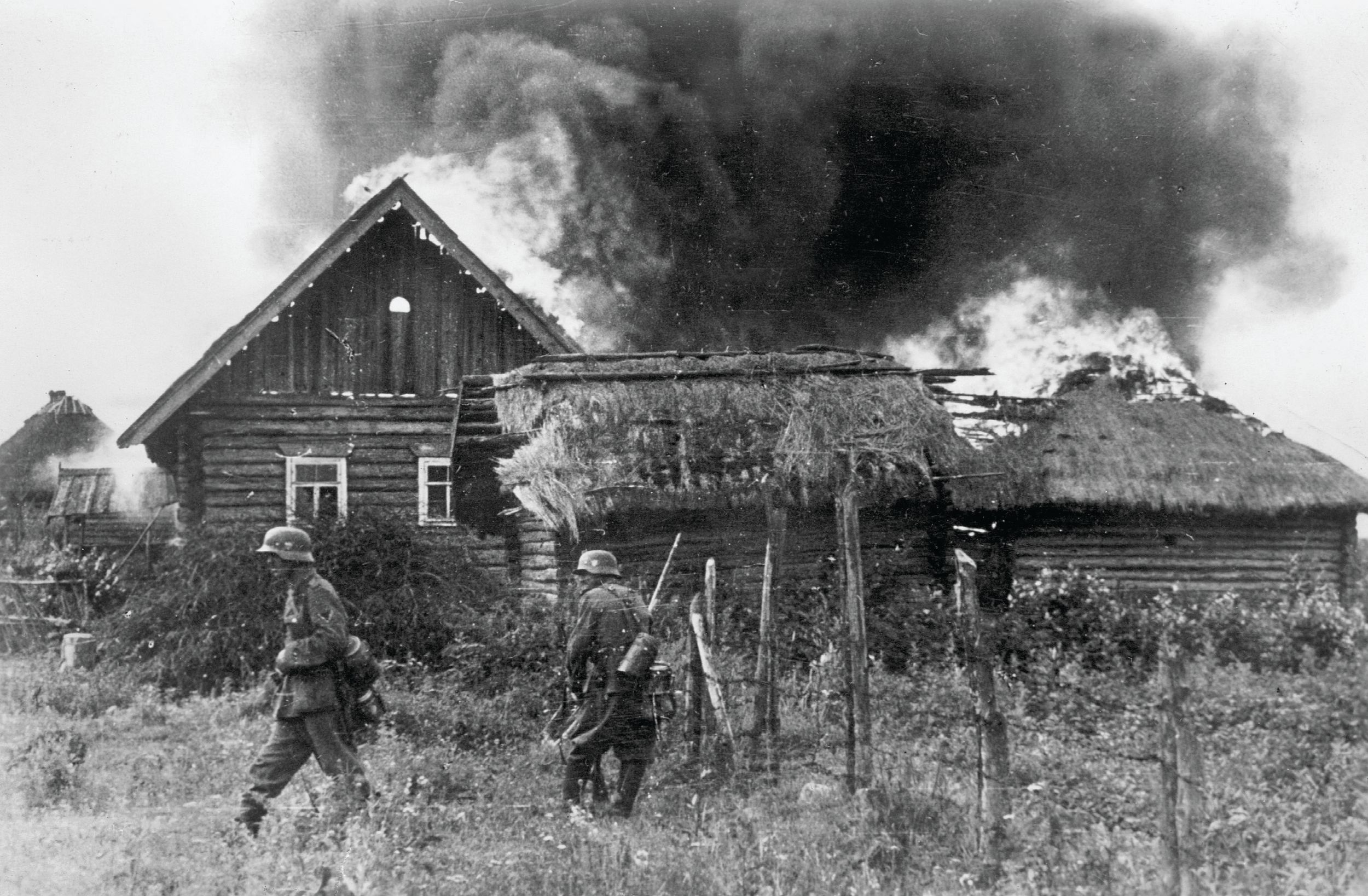
In Kursk, for example, the manager of an alcohol trust “decided to take his family from Kursk to Cheliabinsk oblast [an administrative region or province], illegally procuring documents for their departure, even though an evacuation of Kursk oblast and the city of Kursk was not underway. Using his position, he departed with his family in a car belonging to the trust, which he filled with 425 kilograms [51 gallons] of petrol.”
Given the scarcity of transportation, many traveled by foot. In the town of Klintsy, where evacuations were left until it was already too late, the civilian population had little choice.
The sheer volume of people passing through individual stations on a daily basis overwhelmed authorities and the facilities at their disposal. During the most intense period of evacuations, as many as 17,000 or 18,000 people passed through the Sverdlovsk evacuation center each day.
During the war, “passing through” could take anywhere from a couple of hours to a couple of weeks. As Aleksander Wat explained in his memoirs, “When changing trains you had to have your ticket validated again at the window, and it always turned out that there were no seats for the next two, three, four days. Since there were no hotels, there was no choice but to camp out at the station.”
If a new ticket was required, the wait could be even longer. Inna Shikheeva-Gaister and her small circle of traveling companions moved from their apartment in Ufa “to live at the train station, to make it more convenient to stand in line for tickets.” They reached their turn in line after one week.
The primary cause of delays was the acute shortage of railway cars. As a report from the city of Kuibyshev put it, “Railway authorities do not provide the required number of railway cars for the dispatch of evacuees.” The transportation of millions of people and goods posed a formidable challenge, which tested the limits of the country’s infrastructure.
By November 20, 1941, 914,380 railway cars had been sent east carrying raw materials, industrial goods, machinery, and people. One year later, the number had risen to more than a million and a half. This represented a substantial proportion of the country’s overall transportation capacity. In July 1941, almost half of the existing stock of railway cars was involved in the evacuation.
Evacuee transport was significantly complicated by the seemingly limitless needs of the front. In the eastern Ukrainian Republic, for example, officials noted that the “directors of the stations are incapable of sending the evacuees anywhere due to the lack of passenger trains and the absence of covered rolling stock, used only for the needs of the front.”
A similar problem was reported on the Black Sea during the evacuation of the Crimea in August 1941, when repeated requests for boats were refused on the grounds that it would simply not be possible “until the freeing up of ships from Odessa.” The shortage of railway cars had a dramatic impact on both the efficiency of the overall process and on the conditions in which people traveled.
The situation was particularly dire in Stalingrad. In late November, a special commission was dispatched to Stalingrad to investigate reports of problems in evacuee transit. They found “two hundred thousand evacuated people, not only on the trains but at the stations, evacuation centers, and harbors, on the streets, in the stadium, on city squares, and…on the outskirts of town.”
The city on the lower Volga that was to become the site of one of the most famous battles of World War II was, in the first year of the war, one of the primary reception points for evacuees. In the first seven months of the war, 438,500 people passed through the city’s evacuation center. According to monthly reports from the center, not a single evacuee spent fewer than two full weeks waiting for connections.
Predictably, such conditions sparked bursts of outrage. In mid-November 1941, Nikolai Shvernik, chairman of the All-Union Council of Trade Unions, received an irate letter from a communist stranded in Stalingrad on his way from the Donbass region of the Ukraine to Novosibirsk in southwest Siberia.
Describing in vivid detail the general disarray, he charged: “I didn’t see such disorder, chaos, and helplessness in all the years of the revolution. The people move east at will, literally starving, enduring unbelievable suffering. And what is really bad is the inability of authorities on the railway line and in cities to organize the mass distribution of food, hot water, and warm clothes for living people.”
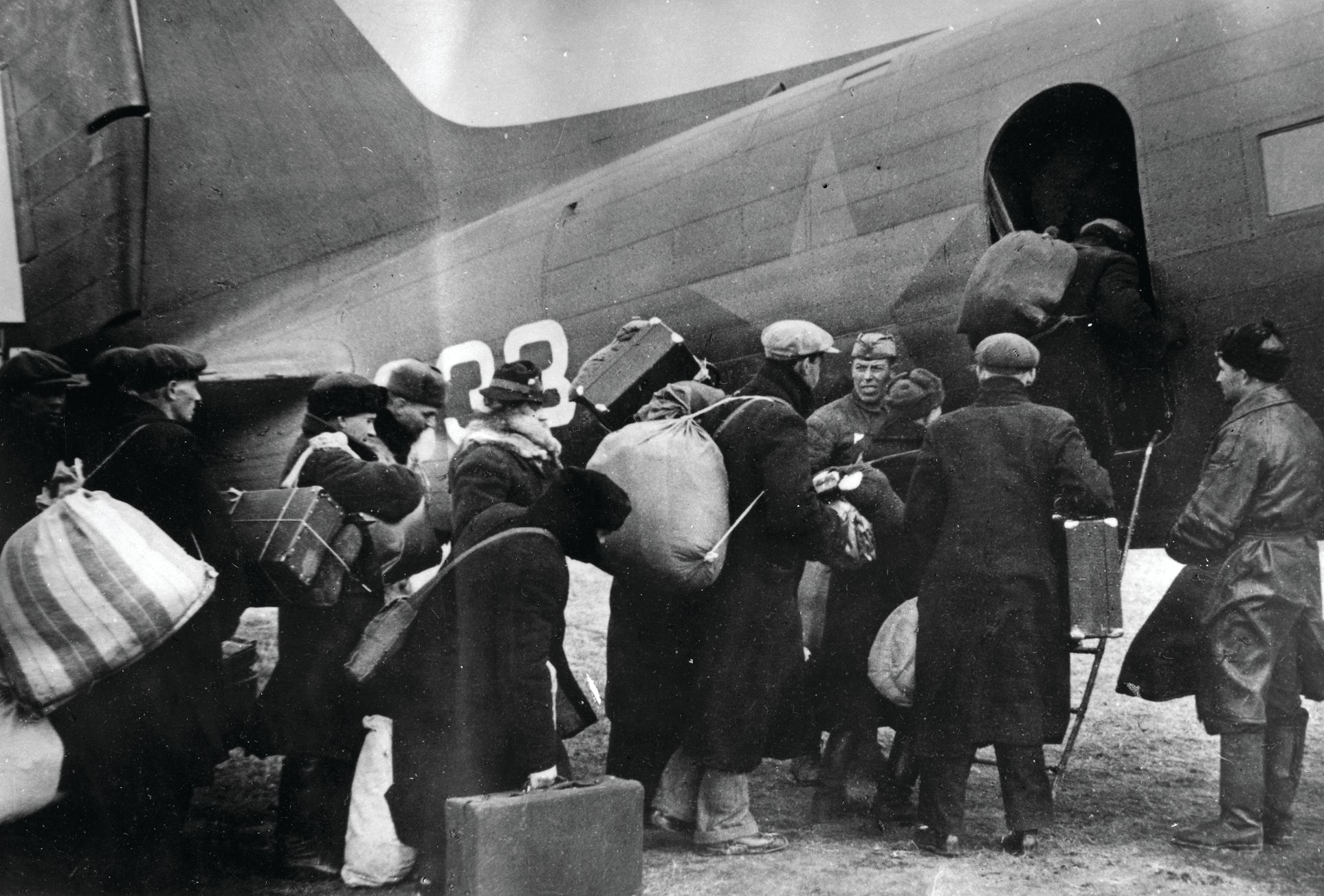
In Stalingrad, it was reported that only one of the city’s five evacuation centers had hot food. When author Kornei Chukovskii stood in line for bread at a stop by the Aral Sea, he got nothing. What set Chukovskii and his traveling companions apart, rather, was the willingness and ability of higher authorities to intervene on their behalf. Writers, the “engineers of human souls,” traveled with candles and sausage procured for them before their departure from Moscow by Alexander Fadeev, the secretary of the Writers’ Union.
Telegrams requesting preferential treatment, moreover, were dispatched on their behalf to stations en route. The relative comfort of the intellectual and cultural elite was ensured not only by the likes of Fadeev, who stood at the head of the literary establishment, but by the highest levels of the political establishment. No less than Aleksei Kosygin, deputy chairman of the of People’s Commissars, saw to it that the evacuated “artists, writers, and honored scientists” were adequately provisioned. In several cases, those who lacked appropriate documentation were simply refused food outright.
Making one’s way through the hurdles required companions. As author Georgii Efron, contemplating his upcoming evacuation to Tashkent, noted in his diary: “I’m not going alone—that is already very significant.”
In this sense, the collective really had become a basic unit of Soviet society. As in Soviet life more generally, travel on one’s own made the journey significantly more difficult. One person was required to stand with the luggage while another stood in line.
Companions were essential. Stories of the railway journey frequently revolve around the new and transitory communities that formed en route. The adolescent Inna Shikheeva-Gaister and her younger siblings banded together with another young woman whom they met on the journey east. Writer Zinaida Stepanishcheva’s whole railway car grouped together under the leadership of one particularly enterprising individual. And Soviet historian Nikolai Druzhinin recalled how a “distinctive ‘commune’ formed en route, which existed until the end of our journey.”
At the same time, evacuees set about reconstituting the communities that had only recently been rent apart. They sought to reestablish contact with those they had left behind and to bridge the widening gulf that separated them from their loved ones.
Evacuees sent hurried letters to family and friends informing them of the progress of their journey and in some cases of their departure. Kornei Chukovskii dispatched a telegram to his daughter Lydia, evacuated earlier that summer to Chistopol, from Penza: “Going to Tashkent.” He urged her to join them there. Elena Dobychina wrote to her sister on August 4, “I don’t know if this postcard will reach you…. I am on the train. I am going to Tashkent.”
The memoirs of Zinaida Stepanishcheva offer a glimpse into the mechanics of such a journey. She had been given a ticket for Penza, but on departure from Moscow, she had joined an unofficial, collectively formed echelon bound for Tashkent. When the group reached Penza, the same enterprising individual asked each of the “Tashkenters” for a bit of money, and secured their passage to Chkalov by bribing the coupler to simply attach their car to the outbound train.
“In Chkalov,” Stepanishcheva recalled: “he did the exact same thing and we were attached to a train that went to Tashkent…. We traveled from Penza to Tashkent without tickets. Everyone had documents from the evacuation center, designating various destinations, but we all went to Tashkent. In the chaos that prevailed in the country, nobody checked either our tickets or our documents.”
A representative on the Penza railway line reported that the “evacuated population travels in a disorganized fashion, in all manner of trains, and frequently without tickets.” Stepanishcheva and her traveling companions were clearly no exception.
DESTINATION TASHKENT
One of the most sought-after sites of refuge in the interior that seemed to possess an almost magical appeal to the evacuees, even though most had never been there, was Tashkent, the capital of Uzbekistan.
“Everyone wanted to go south,” recalled Aleksander Wat. “Everyone wanted to go to Tashkent. Why Tashkent? Because Tashkent was a ‘city of bread.’ … That’s the power of a title: Tashkent, City of Bread. Magic words. The book had been published in Russia, but it had been translated into Polish. The Poles didn’t know about it, but all the Jews, even the ones who didn’t read, had heard about it from others.”
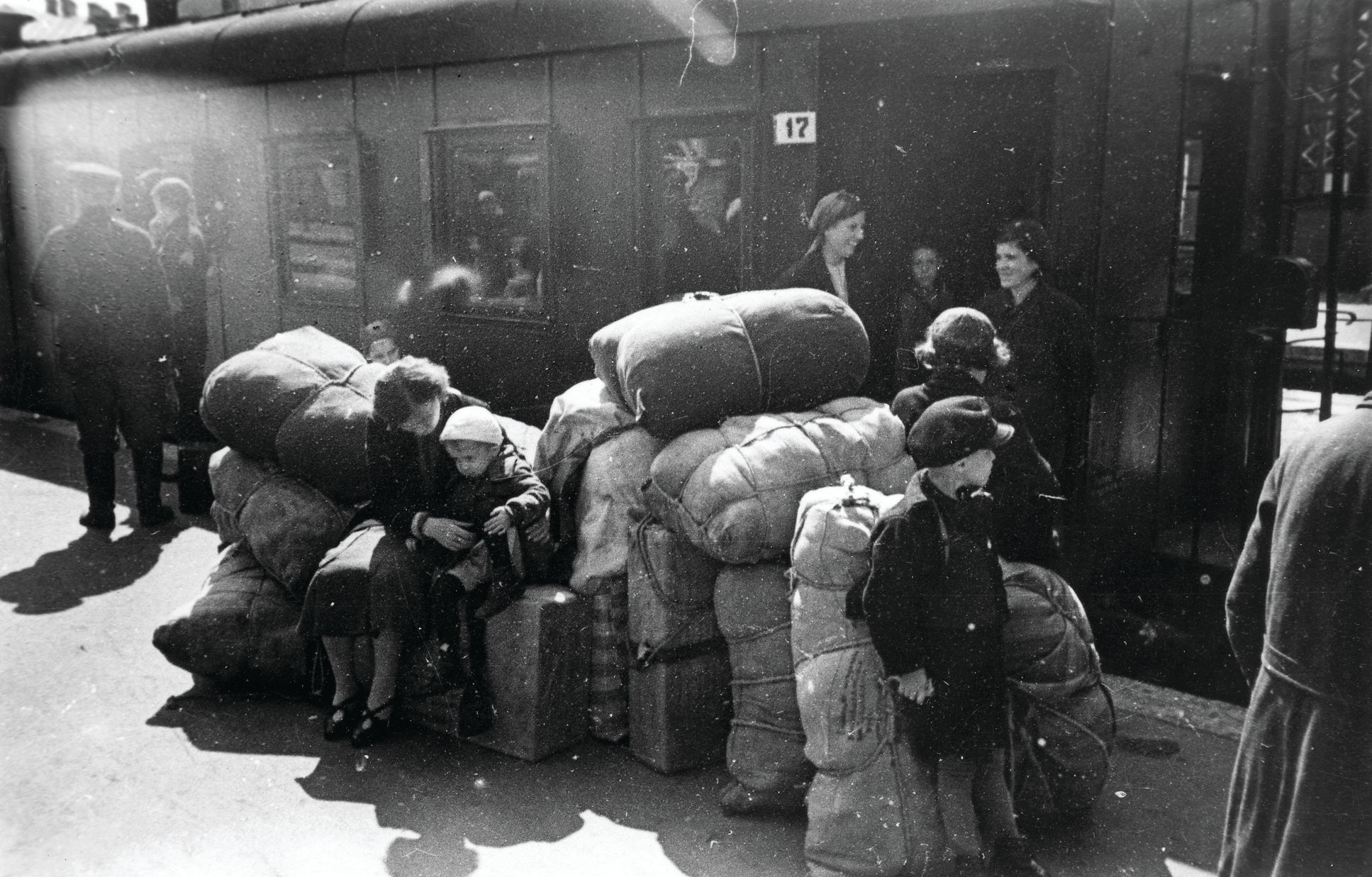
As Wat’s comments suggest, Tashkent’s appeal was, in no small measure, the product of a fictional account: Alexander Neverov’s Tashkent, City of Bread. Written in the early 1920s, it was adapted into a popular children’s book and was translated into a host of other languages including Polish, Yiddish, and Hebrew. The novel, set during the famine of 1921, followed a young boy on his journey from the famine-stricken Volga region east to Tashkent in search of bread for himself and his family.
The book’s title alone helped forge an image of the Uzbek capital in the popular imagination and inspired in the panicked evacuees a desire to reach it.
Tashkent was indeed one of the most popular wartime destinations. Although no one commented on the phenomenon quite as lyrically as Wat, he was but one of many to describe it. “A great number of evacuees are headed for Tashkent,” reported one official in Penza in the fall of 1941. “There is reason to fear that an excessive number of people will accumulate there and that it will be necessary to transfer them to other regions.”
A report from the Kazakh city of Arys likewise noted that “significant masses of people move haphazardly to Uzbekistan and, as a first priority, to Tashkent.” According to Saul Borovoi, who journeyed across the Caspian Sea from Makhachkala to Krasnovodsk, “the majority of refugees sought to go to Tashkent.”
Whether in Moscow, Penza, Kazakhstan, or on the shores of the Caspian Sea, observers repeatedly noted the same phenomenon: in the words of an official in Uzbekistan, “Everyone is headed for Tashkent.”
Tashkent’s appeal stemmed from its southern location as well as its almost legendary food supply and distance from the front. Although evacuees would later complain bitterly about the inhospitable climate, many were originally drawn there on its account.
Georgii Efron, who was of two minds about leaving Moscow, reasoned in his diary that, “at least one need not fear the cold in Tashkent and its surrounding area.” In Leningrad, where evacuees were sometimes informed about the climatic conditions in different parts of the country by an onsite geographer, Tashkent seemed like an indisputably better choice than Novosibirsk, Cheliabinsk, Sverdlovsk, or one of the many other northern cities that also served as important reception sites for evacuees.
As one Polish refugee explained, “The moderate climate, with its mild winters, was attractive to many refugees, who were poorly prepared for the severe winters in other regions of the Soviet Union.”
Evgenii Pasternak, son of the Nobel Prize-winning author Boris Pasternak, later recalled his mother’s thinking when presented with the possibility of going to Tashkent; among other considerations, she had felt that “Tashkent always seemed a wealthy, well-fed city, and in winter it was warm there.” Likewise, anticommunist activist Vladimir N. Petrov recalls that the passengers in his train heading south from Novosibirsk to Tashkent “were very pleased to be going south.”
The journey to Tashkent was long and arduous. Moreover, as Georgii Efron noted in his diary en route, the “routes that lead there are numerous.” Those traveling from the north tended to take the route through Chkalov, formerly Orenburg. The Orenburg-Tashkent line had been built in the early 20th century, connecting the central Asian colony to the metropole.
Before the war, the journey usually took under a week. For those traveling east in 1941, however, the journey was almost always longer. Whereas Kornei Chukovskii traveled the distance in just over a week, Maria Belkina’s train took 11 days, Zinaida Stepanishcheva’s 15 days, and Georgii Efron’s over three weeks. Elena Dobychina, setting out from Leningrad, journeyed for 20 days, and Victor Zhirmunskii one month.
The railway lines were overburdened in both directions. On some lines in the region, trains were moving on average no faster than 200 kilometers (124 miles) per day. Georgii Efron’s diary contains a running chronicle of his echelon’s progress: on the fourth day of the journey, he noted that “our train advances by 100 to 200 meters, then stops for a good half-dozen hours. It would be truly comical if it weren’t so sad.”
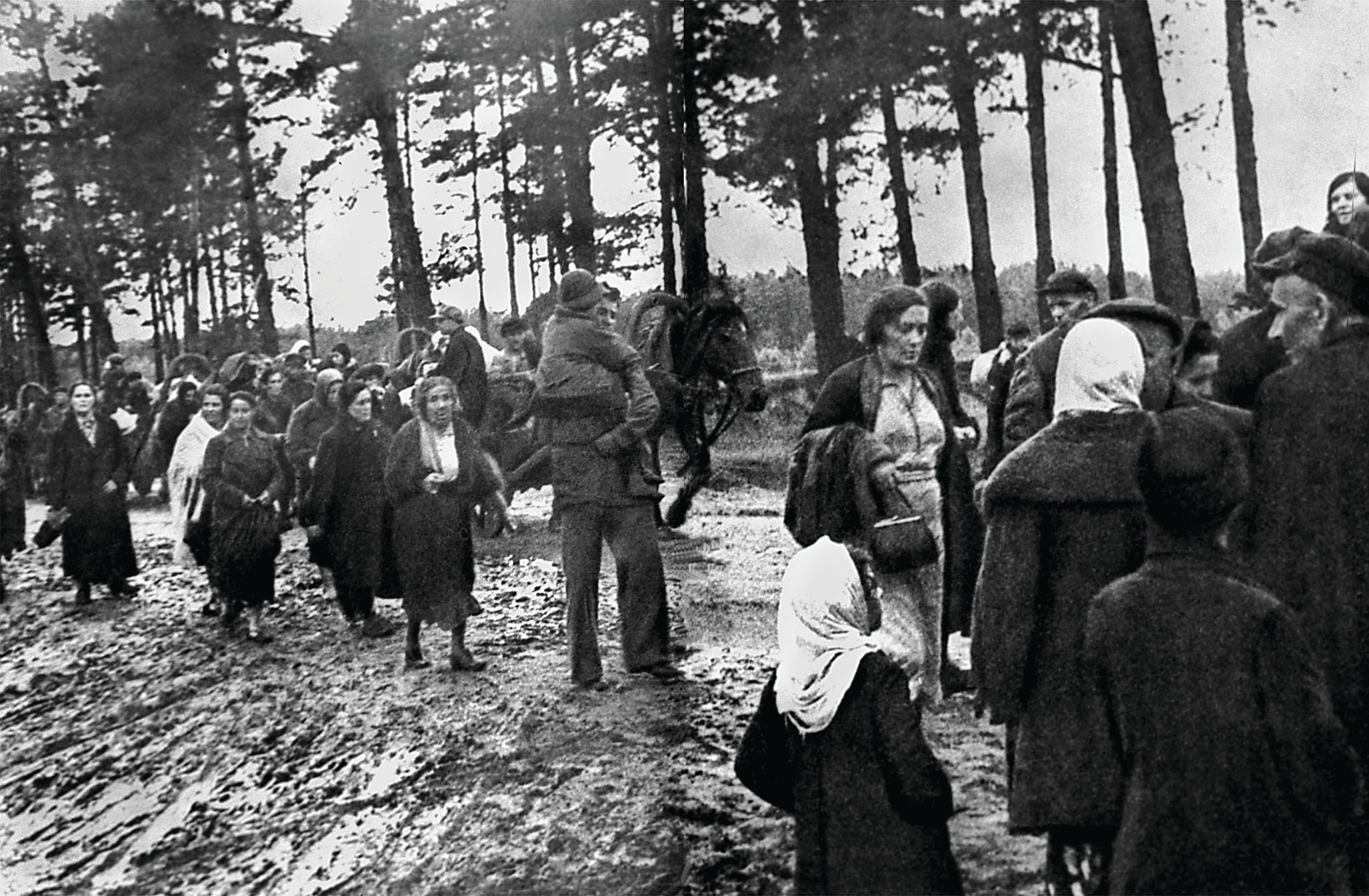
TASHKENT, THE CITY
The city that greeted those displaced by the war struck most as foreign and unfamiliar. Tashkent did not yet boast the distinctively Soviet-style apartment blocks that would come to dominate its urban landscape after the earthquake of 1966. In 1941, plans to transform the city into a model Soviet city, a modern outpost in Central Asia, remained by and large paper projects.
Tashkent was still a city of small one- and two-story houses and dirt lanes. It was divided between the Russian section of the city, built as a European colonial outpost in the late 19th century, and the Muslim district, or old town.
Author Nadezhda Mandelstam later recalled the “small, squat houses and tall trees—a contrast peculiar to Tashkent.” The city was full of such contrasts. On the one hand, there were the “steep and narrow alleys.” On the other, there were broad streets and European squares.
Mandelstam recalls one particular square that she and Anna Akhmatova christened L’Étoile, after the square of that name in Paris. “We conceived a fancy that General Kaufman, in laying out Tashkent, had indulged his nostalgia for Paris by making all the streets converge into this square modeled on the Étoile.”
Whatever pretensions to Europeanness the new city in particular might have had, however, Tashkent was, in the eyes of most evacuees, an inescapably Asian city. The journey into evacuation was conceived as a passage from Europe into Asia.
Kornei Chukovskii, sick and preoccupied with the fate of his soldier son on the front lines, noted, “I am nonetheless happy that I have gotten to see Tashkent, even if in old age.” Indeed, Chukovskii was positively enchanted by the city, which he described as having a “special poetic quality, a melodiousness.”
“I walk the streets,” he wrote in his diary, and it is as if I am listening to music—so wonderful are the rows of poplars. The canals and thousands of varied bridges across them, the views of single-story homes, which seem even lower in contrast to the high poplars—and the southern life on the street and the kind and courteous Uzbeks—and the bazaars, where there are raisins and nuts—and the abundant sun—why have I not been here before—why didn’t I come before the war?”
A similar romanticization of the city is evident even in the writing of those who were otherwise very critical of the Uzbek capital. Tatiana Lugovskaia wrote to a friend who had disappointed her by not coming to Tashkent, “Don’t come, please. And you won’t see Tashkent. You won’t see the streets, planted with poplars, the distances, covered with dust, the camels—single and in whole caravans, the starry sky.”
Such descriptions of the city, although not altogether uncommon, are surprisingly rare in evacuee memoirs, diaries, and letters. Evacuation, after all, was no ordinary trip, and evacuees were not tourists, a fact of which they were all too aware. “It would have been nice,” wrote an evacuee in Kazan, praising the architecture of the university, “to see all this as a tourist, and not as a refugee, which is what we are.”
The tendency to romanticize the new and foreign setting was undercut by the hardships of daily life and by a persistent longing for the familiar. The cinematographer Boris Babochkin wrote to his wife on arrival in Alma-Ata, Kazakhstan, from Tashkent: “The city is beautiful, you could fall in love with it. It is the opposite of Tashkent in every respect—the air is marvelous, there is no dust, it is an enormous park, not a city, there is asphalt everywhere, good houses, few people, no banditry, there are no poor people altogether, and—most important—it is a Russian city. The first impression is charming.”
Babochkin’s praise of Alma-Ata, after several months in Tashkent, underscores the prevailing vision of Tashkent among many evacuees. It was dusty and terribly overcrowded. Moreover, it was dangerous. There is not an account of the city from this period that does not at least mention the high levels of crime. “Banditry” preoccupied evacuees.
Zinaida Stepanishcheva later recalled the large number of swindlers who took advantage of ordinary inhabitants. She recounts how her mother bought two bottles of baked milk, “but it turned out that the milk was only in the neck of the bottle and the bottles themselves were filled with mashed potato…. Such things happened not only to my mother but to all our acquaintances. Everyone told each other the most unbelievable stories of deceit and swindling.”
Rare was the evacuee who did not have something stolen. Alexander Kovarskii lost his new galoshes to a thief; Nadezhda Mandelstam was robbed of a ration of fish; Evgeniia Galina’s mother had her purse stolen, Olga Boltianskaia’s son his passport, and Olga herself some newly bought bread.
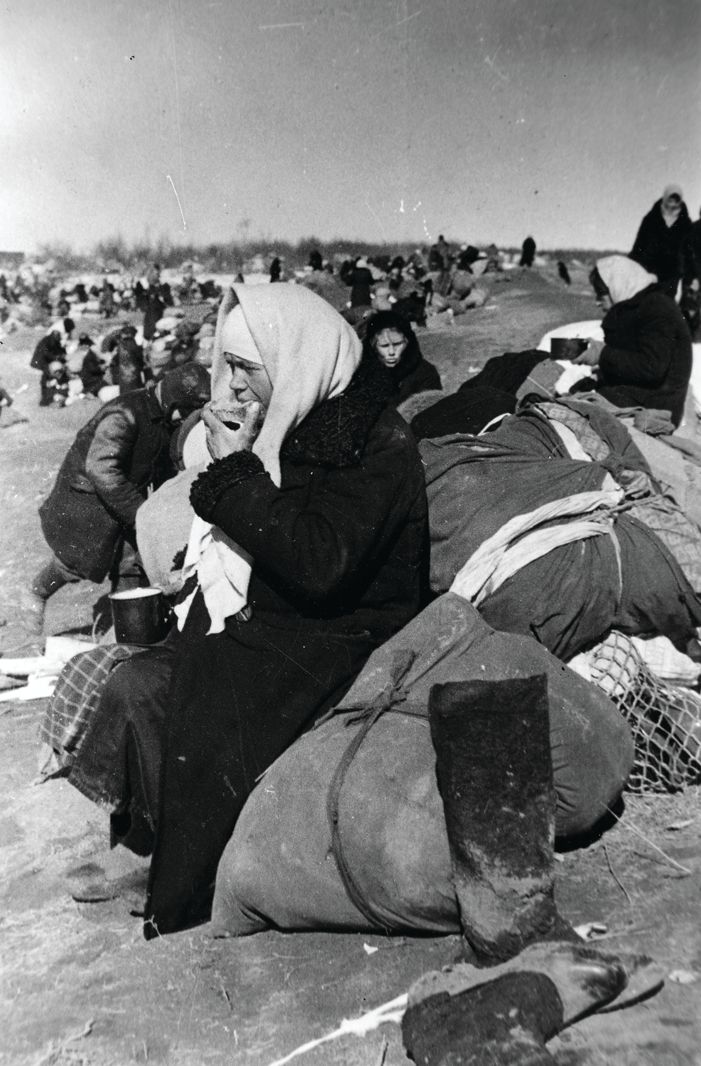
Like crime, dirt and disorder pervade the writings of evacuees. Dmitrii Ushakov wrote in one of his first letters after arriving in the city that “Tashkent’s misfortune is dust and dirt. When it is hot, the dust lies like powder, several centimeters thick; you come home all gray. It rains, and the dust turns into mud that one cannot get out of, fine, slippery, viscous enough that it pulls your galoshes off your foot.”
Tatiana Lugovskaia described Tashkent in a letter to her friend Leonid as “wild”; “there is nothing here,” she wrote, “besides dust.”
Moreover—and perhaps most important—Tashkent was a foreign city. The city’s urban layout, the flora and the fauna, seemed distinctly un-“Russian,” and Russia itself seemed distant and removed.
This sentiment was captured with particular poignancy in one of Tatiana Lugovskaia’s subsequent letters to her friend. Soon after her arrival in Tashkent she wrote: “I’ve found myself in Tashkent, a city where even the water smells of dust and disinfectant, where in the summer water exposed to the sun begins to boil, where in the winter there is mud that has no equal anywhere else in the world (it more closely resembles a quick-drying carpenter’s glue); a city where lady-bimbos (damy-fify) and grief have assembled from all over the Soviet Union, where on the streets, moving alongside the trams, there are camels and donkeys.… In this city, made for death, I have ended up. Why, for what—I cannot understand.”
If the urban landscape, the sights and sounds, almost invariably struck newcomers as foreign, there were some respects in which Tashkent was nonetheless familiar. The squat houses, winding alleys and caravans of camels masked what was an all-too recognizable feature of the urban landscape—its institutional architecture.
Despite the continued frustration of authorities in both Moscow and Tashkent at the failure to make Tashkent a truly modern city, it was an undeniably Soviet city. And what happened to evacuees once they arrived in Tashkent, their struggle to survive, is in many ways a typical Soviet story.
“TASHKENT, CITY OF BREAD”
The war led to a precipitous decline in living standards across the Soviet Union, and Tashkent was no exception. In the first year of the war, the population of Tashkent grew by nearly 20 percent. The city was, in Maria Belkina’s words, “bursting at the seams.” Or, as Evgenia Pasternak put it, “Tashkent … has gone mad from the flood of evacuees.” The sheer number of people put an incredible strain on the city’s resources. Tatiana Okunevskaia compared Tashkent to a “leech that has sucked its fill.” It is “bursting,” she wrote, “there is nowhere left to settle, nothing to eat.”
The struggle for survival on the Tashkent front fell disproportionately on the shoulders of women, who accounted for nearly two-thirds of the city’s evacuee population. As Nadezhda Mandelstam put it in a letter to a friend, “in general there are a lot of people, but they are all women.”
Many women were faced with the task of supporting themselves, their children, and their elderly parents. Tatiana Lugovskaia wrote in a letter that “I have become the head of a fairly large family: two infirm—Mama and Volodia; Polia, who came with us; and Liubochka, whom I befriended here in Tashkent.”
Daily life in Tashkent, moreover, was not easy. Olga Boltianskaia described her daily routine in her diary: “I have to walk a lot … to sell things at the market, purchase and lug home fuel from the market, stand in line for bread and at the cafeteria for soup and dumplings. I walk all day, covering terrible distances as the trams aren’t running, and I come home, and it is like a cellar in our room—I have to heat the stove, prepare dinner, clean up, and so on. Toward evening I feel faint.”
The heavy burden that fell on women’s shoulders took its toll. Lugovskaia confided in a letter that “I never in my whole life felt like such a baba. I am very tired of this emancipation…and I want to lean my head on somebody’s shoulder, but now, of course, is not a time to even dream about it.” It was, in Olga Boltianskaia’s words, a “terrible period for women.”
Letters intercepted by the censors and excerpted for a report on the needs of the families of servicemen in Tashkent present a bleak picture of life behind the front lines. “I am living through difficulties the likes of which I have not yet encountered in my life,” wrote one woman. “Life is a full-blown nightmare,” another wrote to her husband. “It would be better to live under bombardment than in these conditions. It is a slow death.”
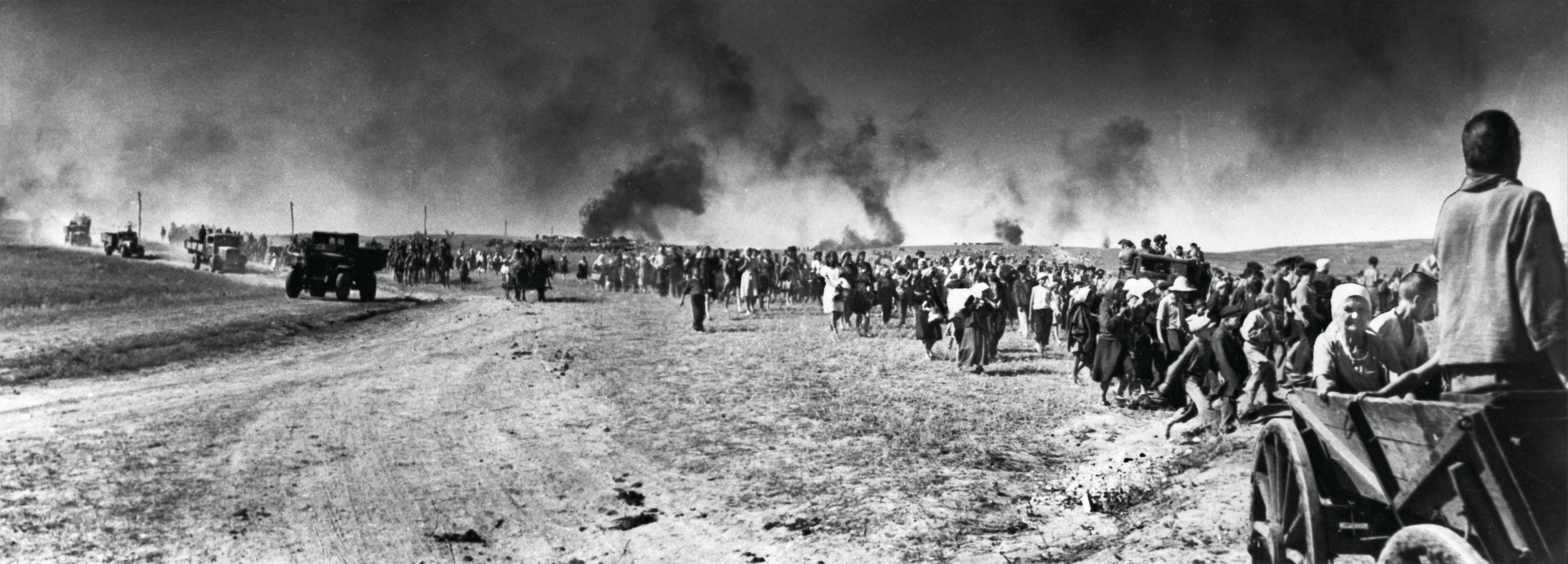
Tashkent, which had seemed like an oasis from afar, now appeared to be, in Tatiana Okunevskaia’s words, an “émigré hell.” Even the climate, one of the city’s main attractions, was a source of seemingly endless misery. As one Muscovite complained in a desperate letter to authorities back in Moscow, “I cannot even describe how tormented I have been and continue to be at present. In the summer it became even more difficult because of the heat. I have malaria and my son is growing sickly thanks to the climate, which does not agree with him.”
Olga Boltianskaia’s doctor even recommended she leave Tashkent. “In the north,” the doctor told her, “it would be easier for me.” The two most persistent causes of complaint, however, and the source of seemingly endless torment, were the daily struggle for food and the search for shelter.
A GOOD STAR
Tashkent was home to tens of thousands of displaced people during the war and ranked among the most significant reception sites for evacuees in the country. It was not for nothing that the poet Iulia Drunina christened the city a “good star.” Referring to the “women and children” who flocked to Tashkent during the war, she wrote: “Yes, it really was a good star! And the most generous city on earth.”
As the many people who were refused entry attests, however, the gates of the city were not open to all. Nor was life in Tashkent easy. Aleksander Wat, reflecting on conditions in the fabled “city of bread,” could not but be ironic: “I, too, was in Tashkent: hunger, typhus from hunger.”
The deprivation and difficulties that characterized daily life in Tashkent were in no small measure a function of the war. Loss of territory and resources coupled with the necessity of shifting economic production from a civilian to a military footing put a significant strain on the Soviet state and its capacity to provide for the population.
At the same time, the war set the limits of the Soviet system into stark relief. Access to scarce state-supplied resources was dependent on status, institutional networks, and connections.
Russian historian Militsa Nechkina later recalled a “conversation between people in the film industry on the train” to Tashkent. “One of them, a prominent cinematographer, almost in tears, said to the other: ‘I don’t want to be a refugee.’ ‘You are not a ‘refugee,’ his friend reassured him. ‘You are an honored evacuee’ [pochetnyi evak].” The friend was quite right. “Honored evacuees” and refugees lived in very different circumstances.
That said, not even “honored” evacuees were above the struggle to survive. Ironically, even those who were rescued by the state were sometimes left to languish in the rear. Akhmatova had been flown out of the city of Leningrad, but she nonetheless had to rely on friends to secure access to both shelter and sustenance.
As Boris Romanov, likewise flown out of Leningrad, remarked of his evacuation in a letter to a friend: “Instead of the salvation of the golden fond—illness and poverty.” “Illness and poverty” could not but breed frustration with the Soviet state. That said, the country was at war. For the most part, moreover, evacuees regarded the war not simply as “a war,” but as “our war.”
Whether recalled with nostalgia or bitterness, for those who lived through it the evacuation was an experience not to be forgotten. In historical scholarship and fiction it is common to focus on the “frontline experience” as a defining moment in the lives of an entire generation. For the many people who did not serve on the front, however, the evacuation rather than the front defined their wartime experience. As Iania Chernina later remarked, “Tashkent is my war.”
Evacuation constituted a journey into the unknown, from which few returned unchanged. Samarii Zelikin observed, “in the moment when we crossed the threshold of our home and set out for the train station, my world was completely transformed.”
As he put it on another occasion, “my generation was in many ways formed by the evacuation.”
Material reprinted from To the Tashkent Station: Evacuation and Survival in the Soviet Union at War, by Rebecca Manley. Copyright © 2009 by Cornell University. Used by permission of the publisher, Cornell University Press.
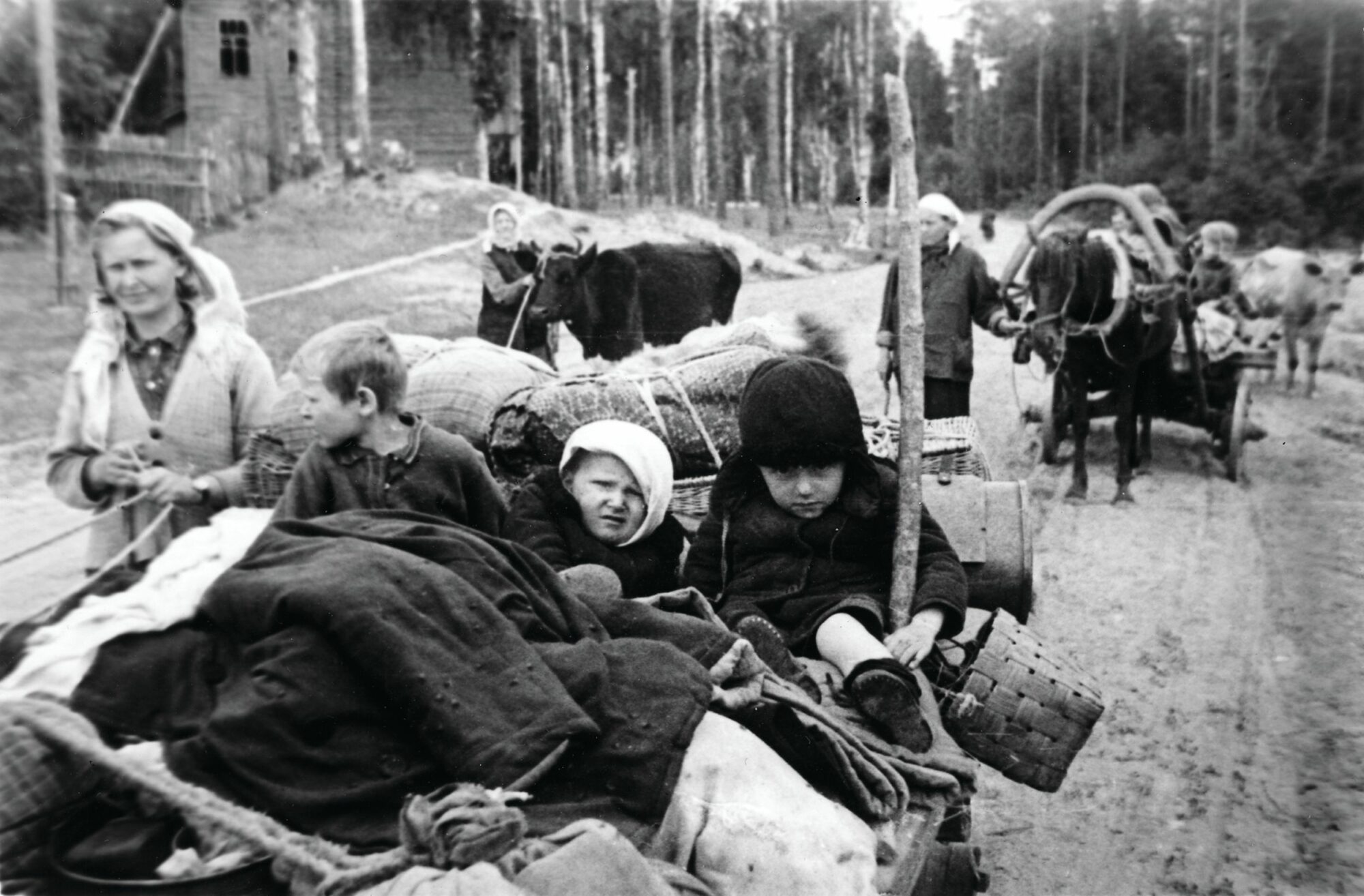
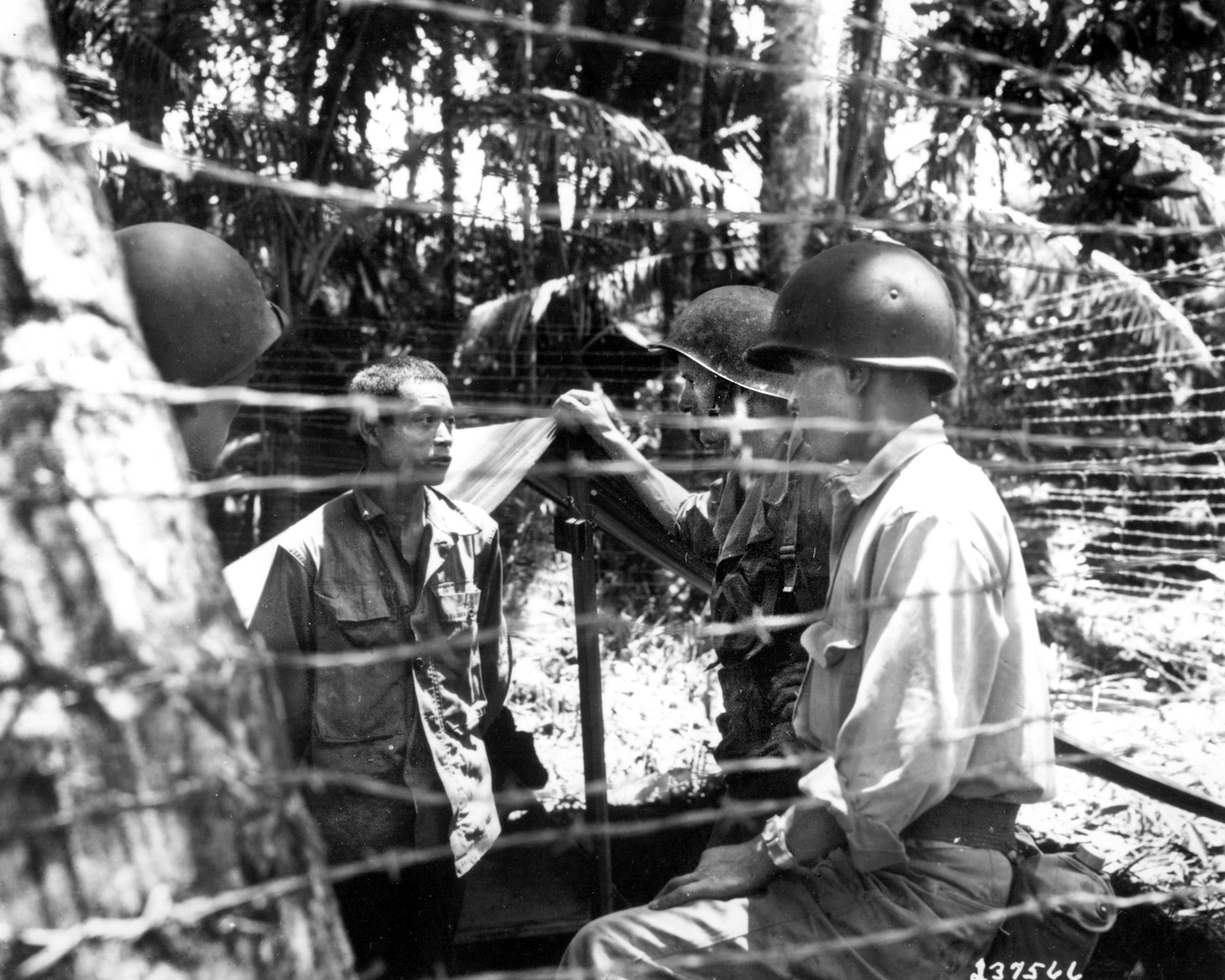
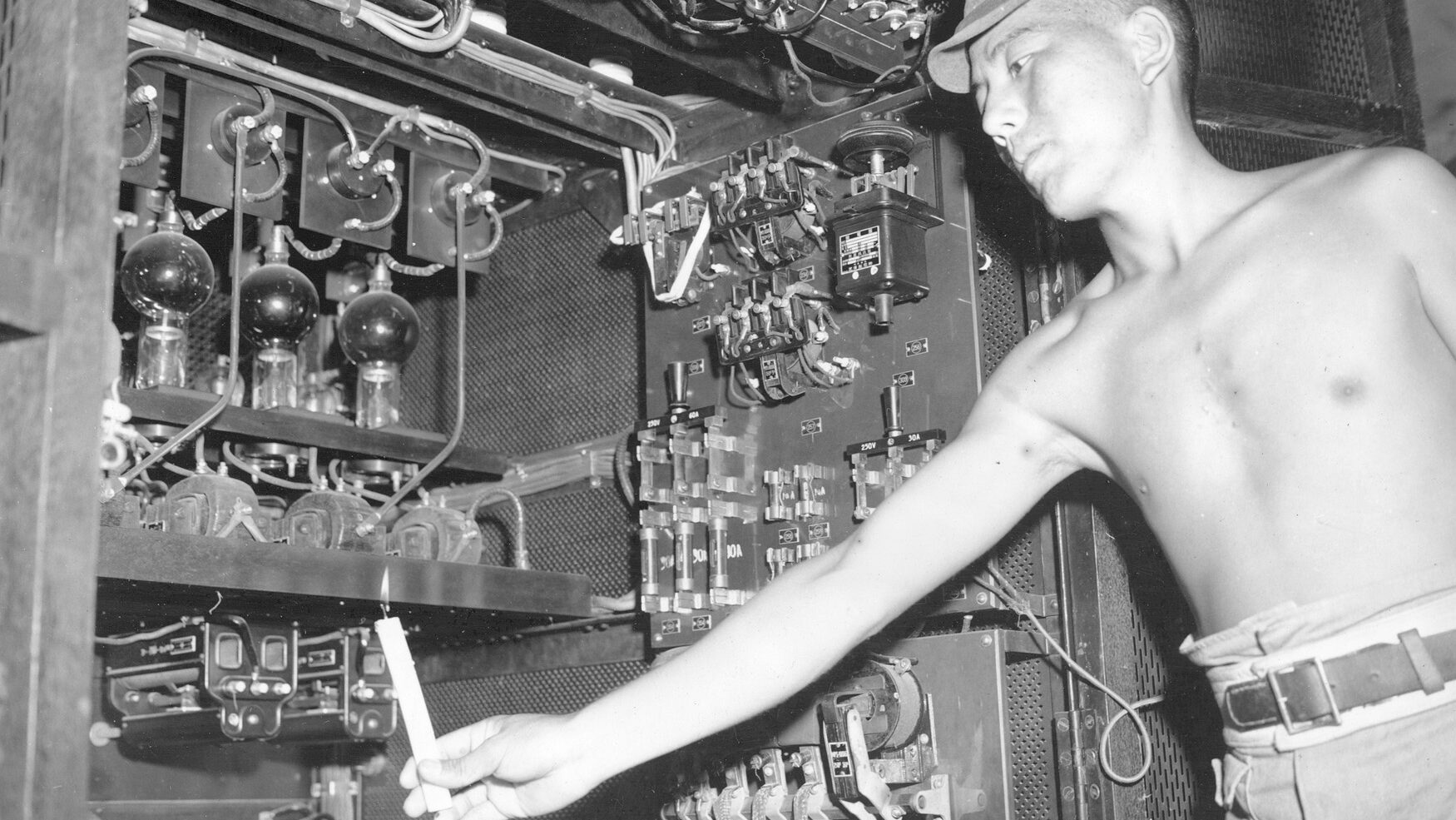
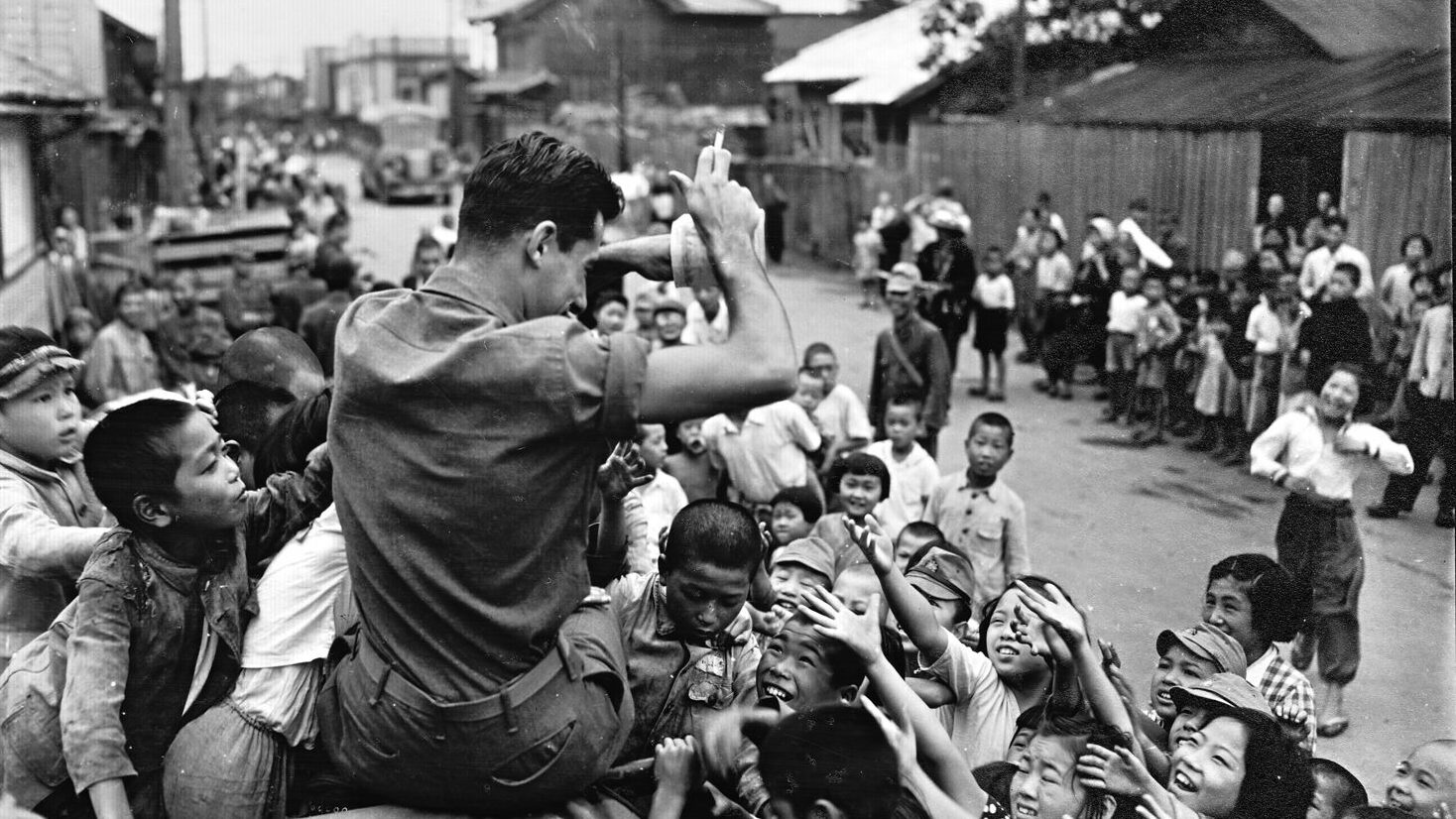


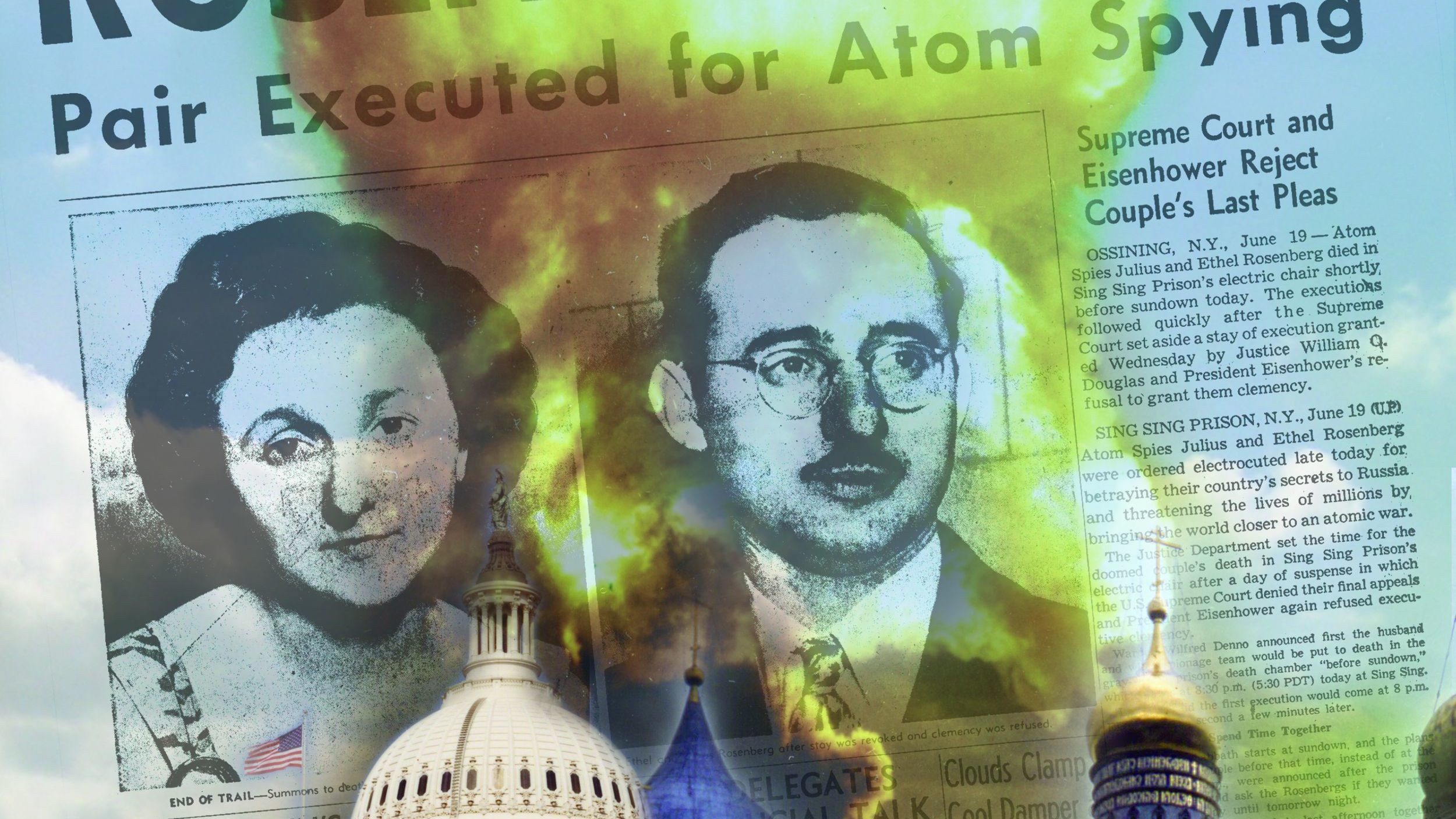
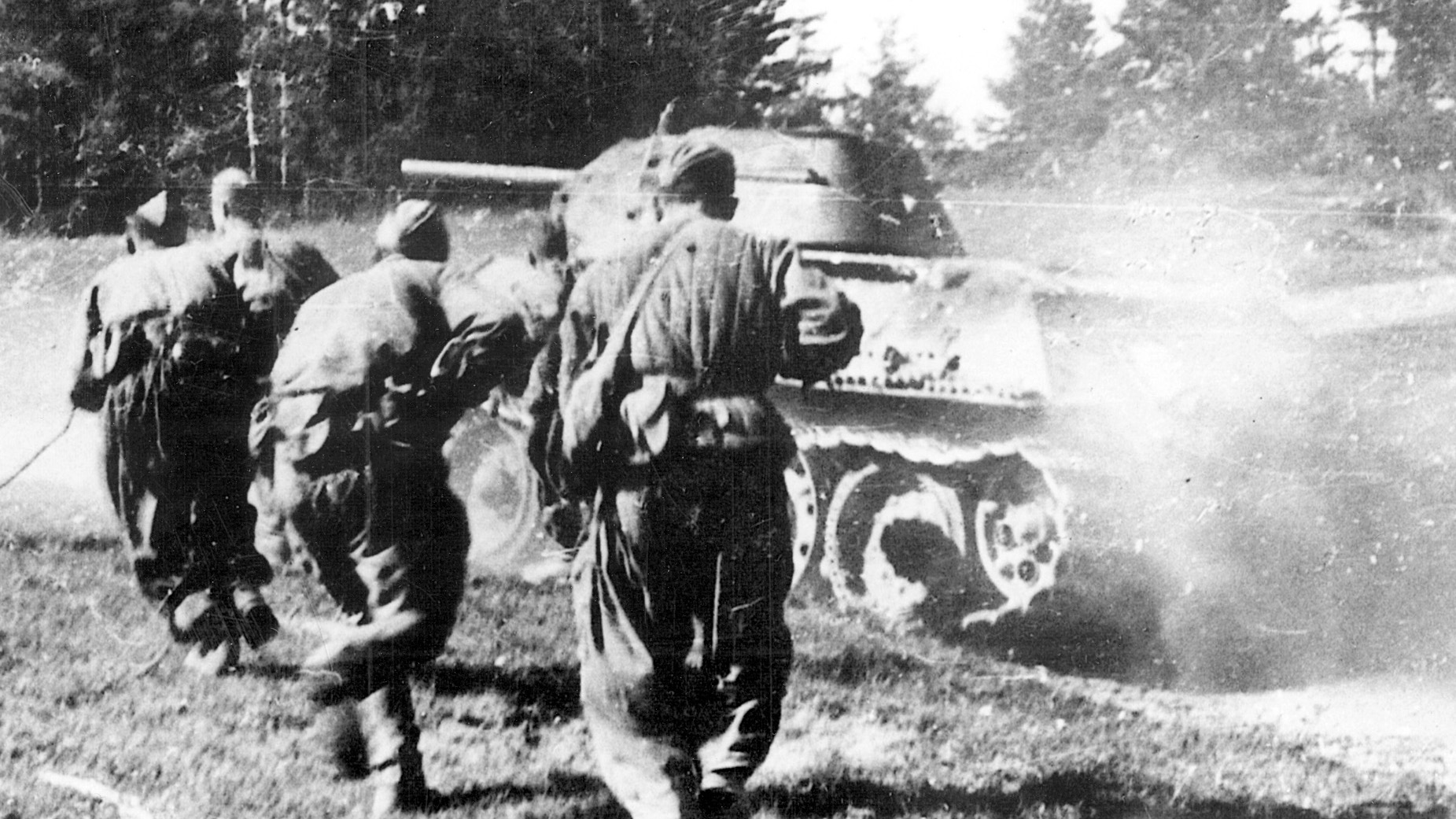
Join The Conversation
Comments
View All Comments